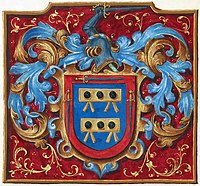- May 2006

The Grenville Diptych was produced between 1822 and 1839 for Richard Temple-Grenville, Marquess of Chandos the son of the first Duke of Buckingham and Chandos. It shows 719 quarterings of the family, including ten variations of the English Royal arms. The left panel of the diptych lists the quarterings.
- June 2006
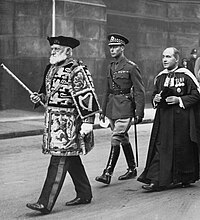
Sir Francis Grant, Lord Lyon King of Arms, HRH The Duke of York, and Rev. Charles Warr proceeding to the Armistice Service at St. Giles' Cathedral, Edinburgh, in 1933.
- July 2006

Pursuivants in procession to St George's Chapel, Windsor Castle for the 2006 service of the Order of the Garter: Peter O'Donoghue, Bluemantle Pursuivant of Arms in Ordinary (left), Alastair Bruce of Crionaich, Fitzalan Pursuivant of Arms Extraordinary (right).
- August 2006

Coats of arms displayed on shields and gonfalons, and crests mounted on helmets at a reenactment of a medieval tournament.
- September 2006

A caricature of Sir Alfred Scott-Gatty, Garter Principal King of Arms, from the 1 December 1904 edition of Vanity Fair painted by Sir Leslie Ward.
- October 2006
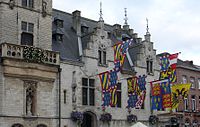
The town hall of Dendermonde, a city in Flanders, displaying heraldic banners.
- November 2006

The town hall of Gouda, a city in the Netherlands, displaying heraldic banners of the arms of (left to right) the Dutch Republic (1581–1795), the County of Holland (1198–) and the Kingdom of the Netherlands (1815–).
- December 2006
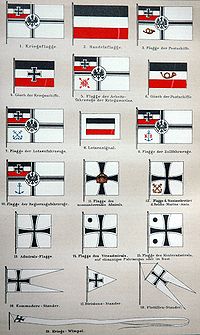
Flags used by the German Kaiserliche Marine (Imperial Navy), 1892.
- February 2007
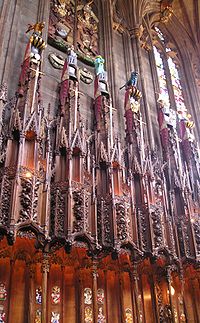
The chapel of the Order of the Thistle in St Giles Cathedral. Above each stall the knight's helmet with crest and mantling (and, if a peer, the coronet of rank) is displayed. At the back of each stall is a plate bearing the knight's coat of arms.
- March 2007
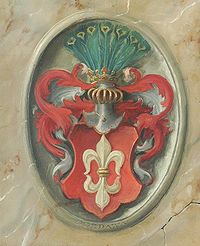
Oil painting (2005) of the Coat of arms of Gozdawa. In Polish heraldry each coat of arms has its own name and may be shared by several unrelated families.
- April 2007
The hatchment of Monsignor Leo-Karel Jozef De Kesel, auxiliary bishop of Ghent. The mitre, cross, crosier and green galero with six tassels, all features of ecclesiastical heraldry, indicate his office of bishop.
- June 2007

The blue and white banner of Zürich was depicted in a 1585 painting by Humbert Mareschet. The red Schwenkel on top of the banner is typical of German heraldry.
- July 2007

Coat of Arms of Austria-Hungary, designed in 1915 in order to replace an older coat of arms, also used as the coat of arms of Bosnia and Herzegovina, and for other countries under Austro-Hungarian rule.
- August 2007
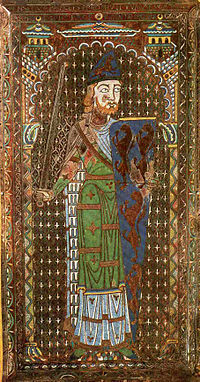
The tomb of Geoffrey V, Count of Anjou is one of the first recorded examples of hereditary armory in Europe.
- September 2007

A medieval ship flag captured by forces from Lübeck in the 1420s showed the arms of Denmark, Sweden, Norway and Pomerania. It remained in this city for 500 years, until destroyed in a World War II bombardment that damaged St. Mary's Church where the flag was kept. A 19th century copy remains in Frederiksborg Palace, Denmark. The saint accompanying the Virgin Mary and infant Christ is Saint James the Greater, identified by his scallop shell emblem. The flag was made of coarse linen; all figures and heraldic insignia were created using oil-based paint.
- March 2008

The Hyghalmen Roll was made in the late fifteenth century and illustrates the German practice of repeating themes from the arms in the crest.
- April 2008
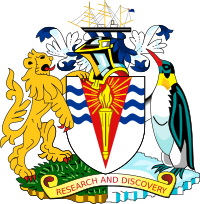
The Coat of arms of the British Antarctic Territory features a lion and Emperor penguin as supporters, and the RSS Discovery in the crest.
- May 2008

The coat of arms of Austria was modified after World War II to include a broken chain signifying liberation from Nazism. It uses a single-headed eagle rather than the double-headed eagle of the former Austro-Hungarian Empire.
- June 2008
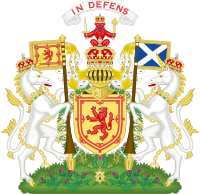
The Royal Coat of Arms of Scotland was the official coat of arms of the monarchs of Scotland and the Kingdom of Scotland until the Union of the Crowns in 1603.
- July 2008
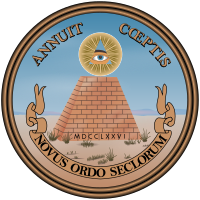
The reverse of the Great Seal of the United States was designed by William Barton, and features two mottos: Annuit Cœptis and Novus Ordo Seclorum.
- May 2009

A lithograph from 1876, showing the seals of the then-47 U.S. states and territories as well as the District of Columbia. Some of these seals have changed since this image was created.
- June 2009
A video of the second raising of the U.S. flag on Iwo Jima, the photograph of which by Joe Rosenthal became one of the most recognizable of World War II. This was shot by U.S. Marine Sergeant Bill Genaust, who was standing next to Rosenthal, and as such, the film shows the event from almost the same angle as the famous photograph. (Need help viewing this video?)
- August 2010
Illustration from a manuscript grant of arms by Philip II of Spain to Alonso de Mesa and Hernando de Mesa, signed 25 November 1566. Digitally restored.
The Coat of arms of the Russian Empire according to the "Manifesto On Full Blazon of All-Russian Empire", presented to Emperor on October 13, 1800.
Created in 1936, after the restoration of the monarchy, the Coat of arms of the Kingdom of Greece was used until 1967, when King Constantine II was exiled, and then nominally until 1973 when the kingdom was replaced by the Third Hellenic Republic. The arms remains in use by the former Greek Royal Family.
The coat of arms of Albrecht Dürer are canting arms, and a well known example of German burgher arms.
